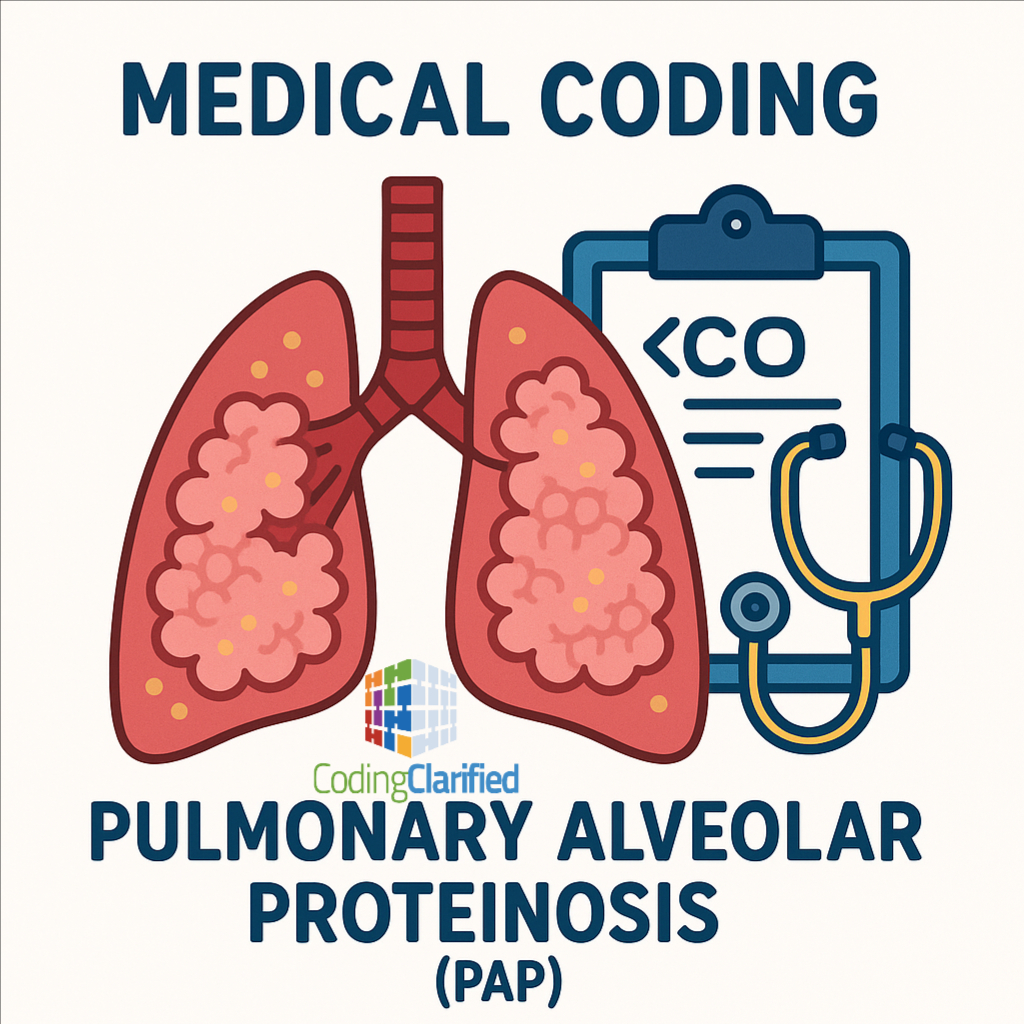Understanding Pulmonary Alveolar Proteinosis
Pulmonary Alveolar Proteinosis (PAP) is a rare lung disease characterized by the accumulation of surfactant (a lipoprotein material) within the alveoli — the tiny air sacs responsible for oxygen exchange. This buildup interferes with normal gas exchange, leading to progressive shortness of breath and reduced oxygenation. Here are some guidelines and tips for Medical Coding Pulmonary Alveolar Proteinosis.
PAP can be classified into three major types:
-
Autoimmune (Primary or Idiopathic) PAP: The most common form, caused by antibodies that disrupt surfactant clearance.
-
Secondary PAP: Develops due to another condition that impairs macrophage function, such as infection, malignancy, or environmental exposure.
-
Congenital PAP: A genetic form, typically present in newborns or infants.
ICD-10-CM Coding for Pulmonary Alveolar Proteinosis
The ICD-10-CM code for Pulmonary Alveolar Proteinosis is:
-
J84.01 — Alveolar proteinosis
This code falls under Chapter 10: Diseases of the Respiratory System (J00–J99), specifically within the Interstitial pulmonary diseases (J84.-) category.
ICD-10-CM Code for Alveolar proteinosis J84.01
Related Codes (if applicable):
-
J84.09 — Other specified interstitial pulmonary diseases
-
J84.10 — Pulmonary fibrosis, unspecified
-
J84.89 — Other specified interstitial lung disorders
-
J96.0- — Acute respiratory failure (if documented)
-
J96.1- — Chronic respiratory failure (if present)
Always review the documentation to determine if respiratory failure, infection, or other pulmonary conditions should be coded in addition to PAP.
Documentation Guidelines
When coding for Pulmonary Alveolar Proteinosis, ensure provider documentation includes:
-
Type of PAP: Autoimmune, secondary, or congenital
-
Underlying cause (for secondary PAP), such as hematologic malignancy or infection
-
Presence of respiratory failure or hypoxemia
-
Diagnostic findings: CT scan, bronchoalveolar lavage (BAL) results, or biopsy confirming surfactant accumulation
-
Treatment plan: Whole lung lavage, GM-CSF therapy, or supportive oxygen
Coding Tips
Tip 1: Always verify the type of PAP—if secondary, code both the underlying condition and J84.01.
Tip 2: Code any associated respiratory failure using J96.- codes, sequencing based on the reason for admission.
Tip 3: If PAP leads to pneumonia or other complications, code those conditions separately.
Tip 4: Use J84.01 as a principal diagnosis when the encounter is primarily for management or treatment of alveolar proteinosis itself.
Tip 5: For congenital cases, ensure provider documentation links the diagnosis to a neonatal code category if applicable (P27.-).
Example Coding Scenario
Clinical Summary:
A 54-year-old patient presents with progressive shortness of breath. CT imaging shows “crazy-paving” pattern consistent with alveolar proteinosis. BAL confirms PAP. The patient undergoes whole lung lavage.
ICD-10-CM Code(s):
-
J84.01 — Alveolar proteinosis
-
J96.11 — Chronic respiratory failure with hypoxia (if documented)
Key Takeaways
-
Pulmonary Alveolar Proteinosis (PAP) = J84.01
-
Confirm type and cause (autoimmune, secondary, congenital)
-
Capture complications such as respiratory failure
-
Sequence appropriately depending on reason for encounter
Medical Coding Respiratory Failure

